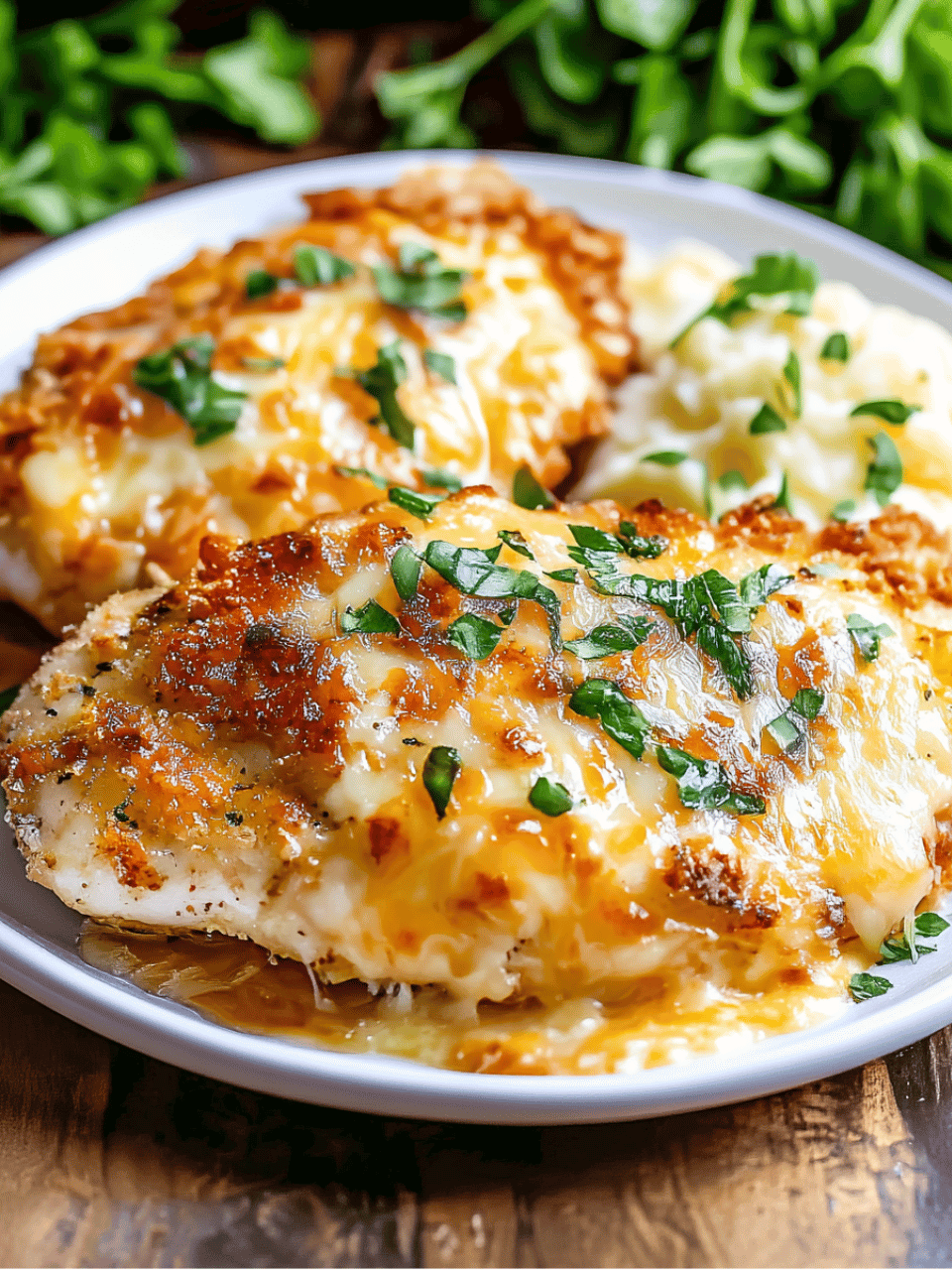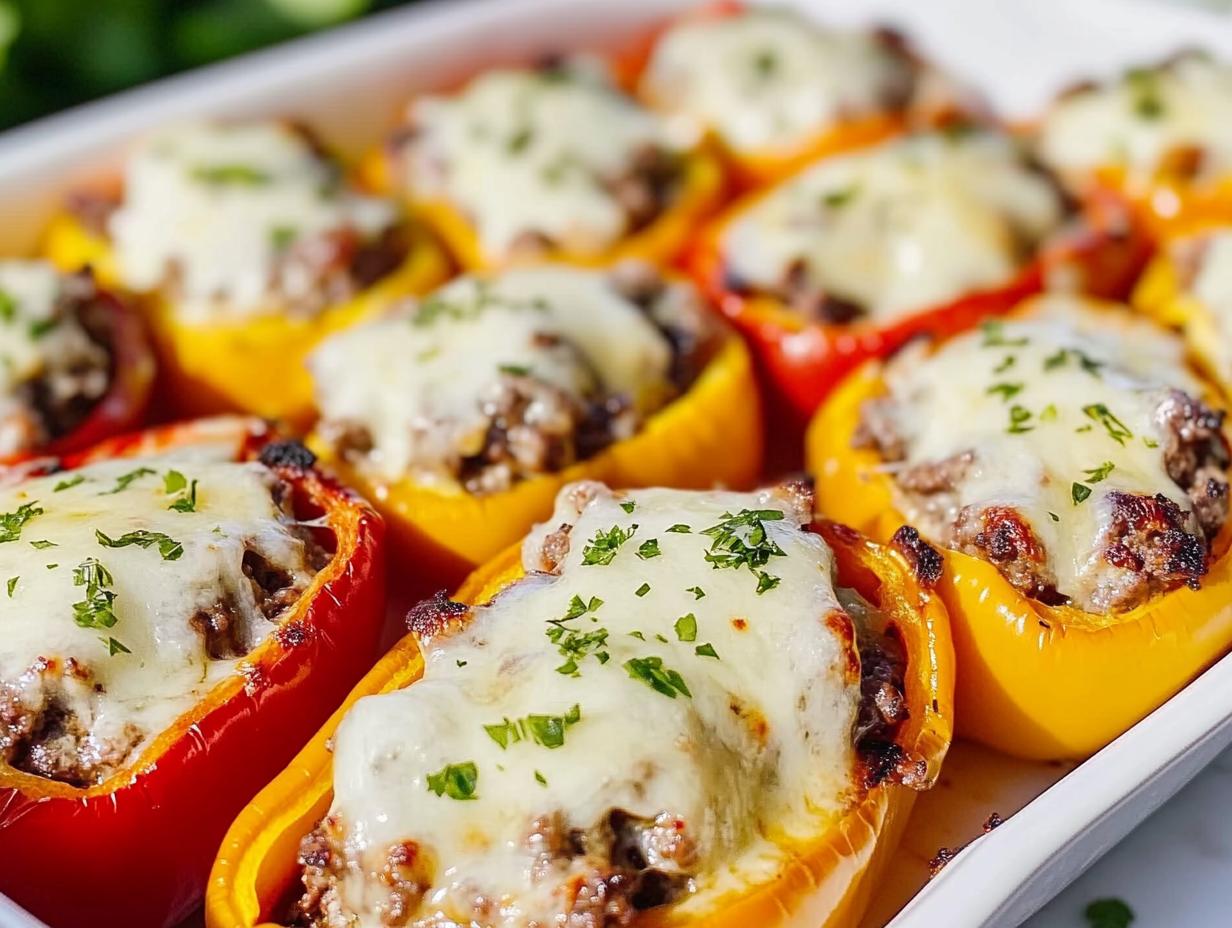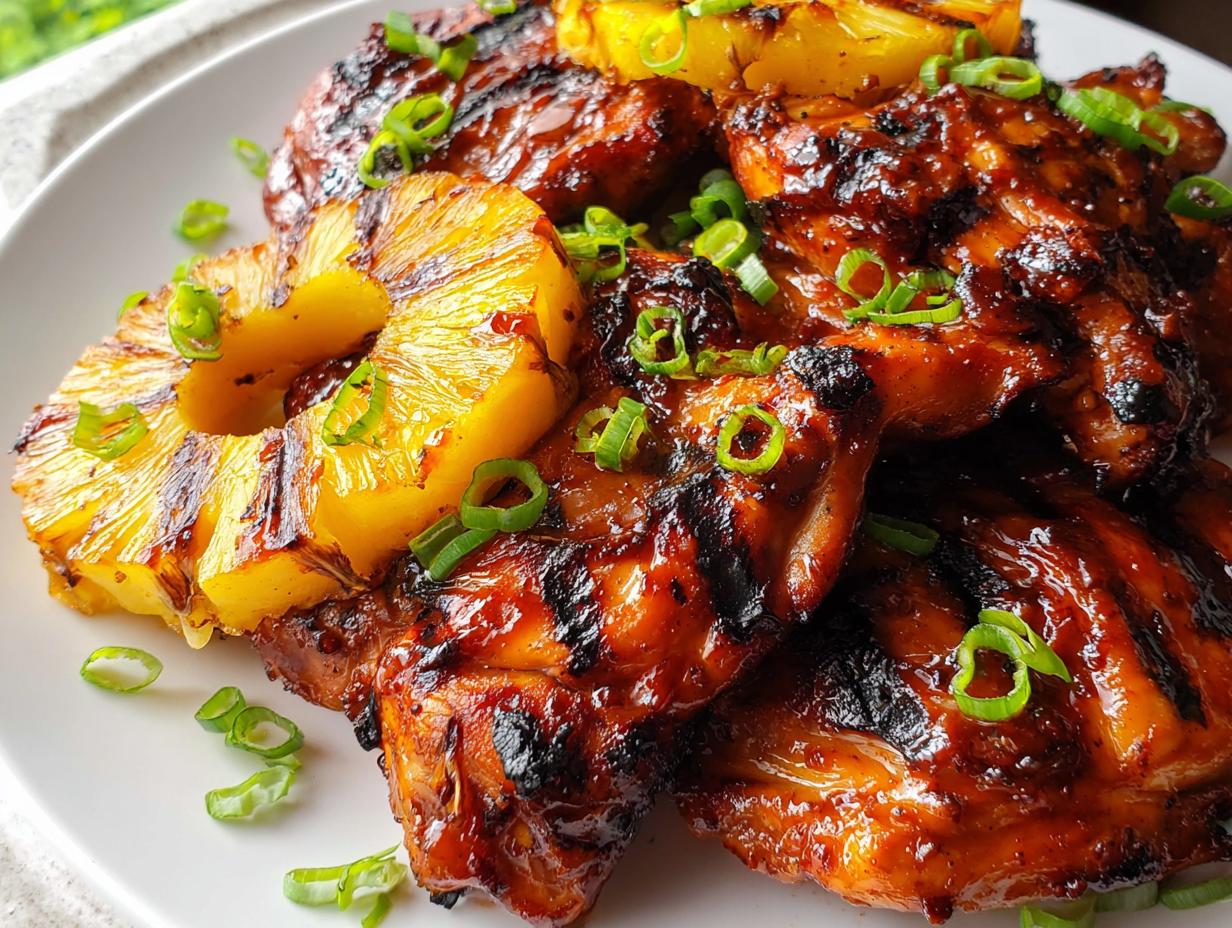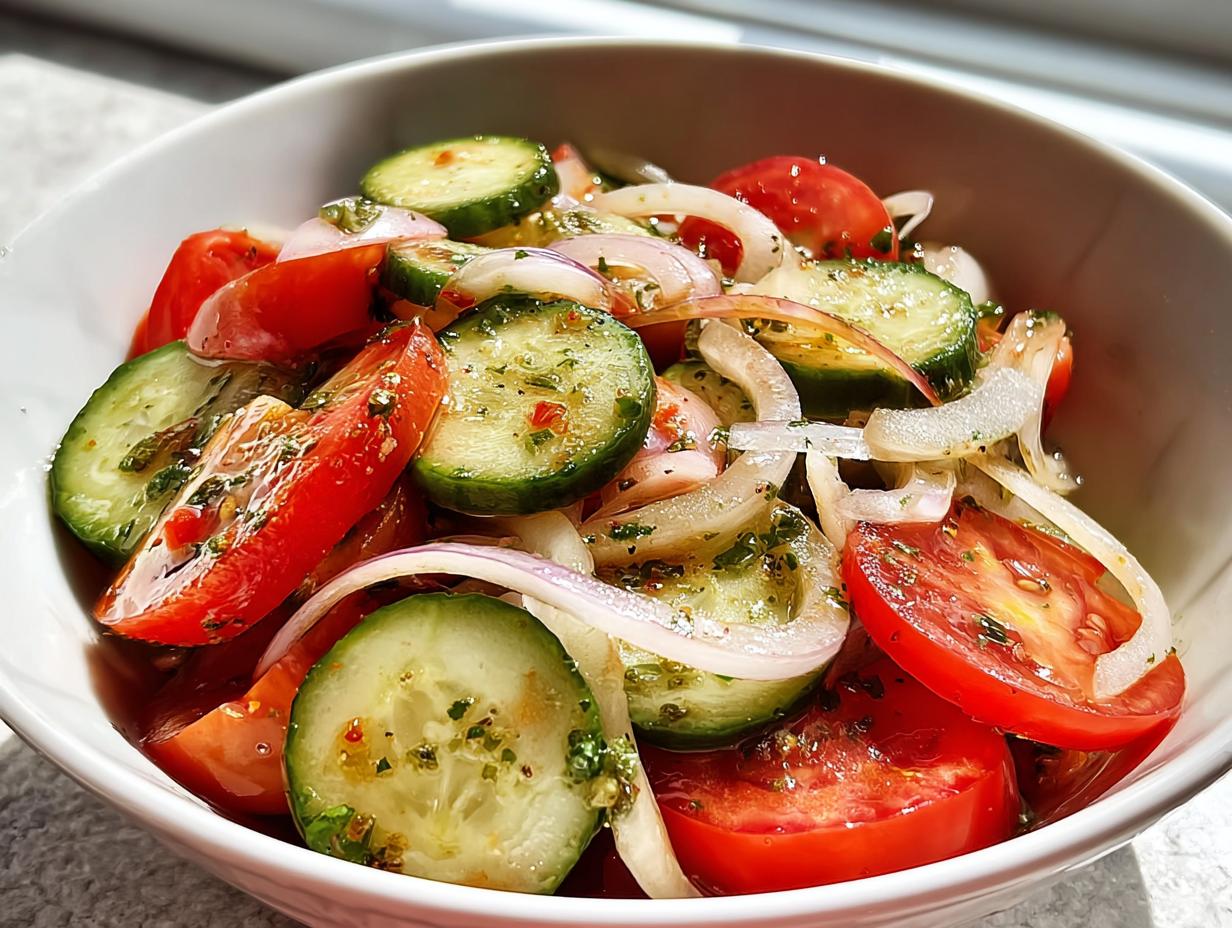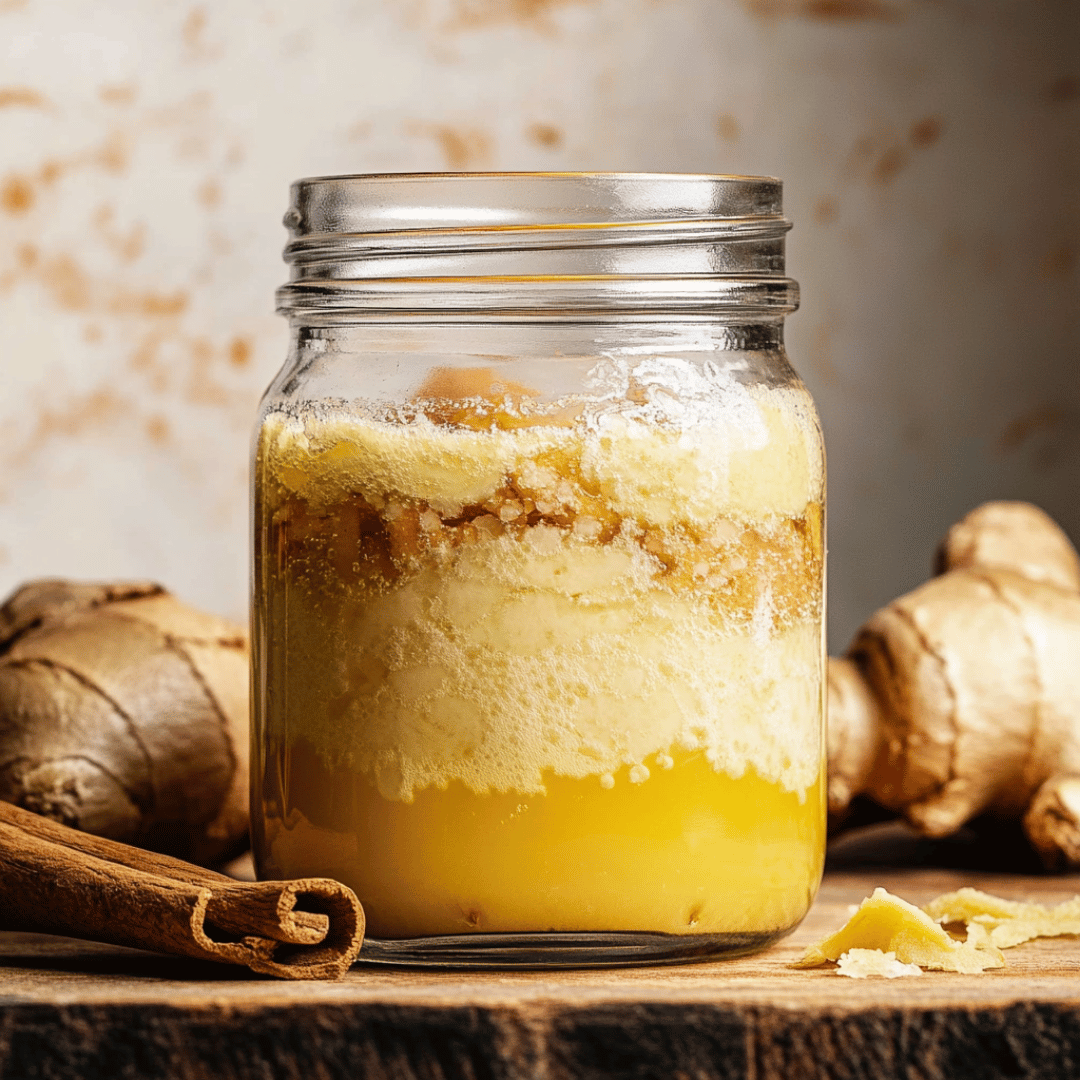
Introduction: The Magic of a Tiny Bubble
When I was a child, my Nonna used to make all sorts of fermented drinks that fizzed and bubbled with life. She would smile and say, “Nature knows best, Sarah.”
Years later, as a chef deeply connected to traditional recipes and natural wellness, I rediscovered the ginger bug — the tiny starter that can transform simple ingredients into sparkling probiotic beverages.
Today, I’m sharing the most complete, fail-proof ginger bug recipe you’ll ever need — plus tips, troubleshooting, and delicious ways to use it!
What is a Ginger Bug?
A ginger bug is a naturally fermented starter culture made with fresh ginger, sugar, and water.
Think of it as the sourdough starter of the beverage world! 🍋🥂
The wild yeasts and beneficial bacteria in the ginger create a probiotic-rich culture that can naturally carbonate homemade sodas, ginger beer, and other refreshing drinks.
Why Make a Ginger Bug?
- Probiotic Power: Boost your gut health naturally.
- Natural Carbonation: No artificial additives.
- Homemade Goodness: Control the ingredients and flavors.
- Simple Ingredients: Just ginger, sugar, and water!
- Eco-Friendly: No plastic bottles, no commercial waste.
Ingredients You’ll Need
Here’s your simple starter kit:
| Ingredient | Quantity | Notes |
|---|---|---|
| Fresh Organic Ginger | 1 tsp finely grated (unpeeled) | Non-irradiated, for live cultures. |
| Granulated Sugar or Raw Cane Sugar | 1 tsp | Regular white sugar or organic cane sugar preferred. |
| Filtered Water (Non-Chlorinated) | 3 tsp | Chlorine can inhibit fermentation. |
Pro Tip: Always use fresh, organic ginger for the best microbial activity!
Equipment Checklist
- 16-oz glass jar
- Cheesecloth, coffee filter, or thin kitchen towel
- Rubber band
- Wooden or plastic spoon (not metal for long stirring)
Day 1: Initial Setup
1. Mix the Base
In a clean 16-oz glass jar:
- Add 1 tsp finely grated ginger.
- Add 1 tsp sugar.
- Pour in 3 tsp filtered water.
- Stir vigorously until the sugar dissolves.
2. Cover and Store
- Secure a breathable cloth over the mouth of the jar with a rubber band.
- Store in a warm, shaded spot (70–75°F / 21–24°C).
Important: Avoid direct sunlight or chilly windowsills!
Days 2–3: Daily Feeding
Every 24 hours:
- Add 1 tsp grated ginger.
- Add 1 tsp sugar.
- Stir thoroughly.
- Re-cover with cloth.
By Day 3, you should start seeing tiny bubbles, a light yeasty aroma, and some ginger bits floating.
Day 4: Activation & Readiness Check
How to Know It’s Ready:
- Fizzy Texture: Active bubbling when stirred.
- Floating Ginger: Ginger bits suspended.
- Sweet-Sour Aroma: Lightly tangy smell, not musty.
No bubbles yet?
👉 Continue daily feedings for 1–2 more days. Fermentation speed depends on room temperature!
Using Your Ginger Bug Starter
Once bubbly and alive, your ginger bug is ready for action!
Quick Drink:
- Mix 2–4 tbsp active starter into 1 cup water, fruit juice, or herbal tea.
- Let sit uncovered 12–24 hours at room temperature for natural carbonation.
Homemade Ginger Beer:
- Combine the starter with a batch of sweetened ginger tea.
- Bottle and ferment according to your favorite recipe.
Storage and Maintenance
Frequent Use:
- Keep your starter on the counter.
- Feed daily with 1 tsp ginger and 1 tsp sugar.
- Discard or use excess liquid if the jar gets full.
Infrequent Use:
- Transfer the jar to the refrigerator with a tight lid.
- Feed once a month: Add 1 tsp ginger + 1 tsp sugar, stir, and return to fridge.
Reviving:
- Bring to room temperature.
- Feed once (or twice if sluggish) until bubbly (6–12 hours).
Troubleshooting Your Ginger Bug
No Bubbles?
- Make sure you’re using organic ginger.
- Check that your water is chlorine-free.
Mold or Fuzzy Patches?
- Discard and start over. Safety first!
Mixture Too Thick?
- Add 1–2 tsp water to loosen it.
Flavor Ideas & Serving Suggestions
Sparkling Limeade
- Mix ginger bug with lime juice and sparkling water.
Fermented Lemonade
- Blend ginger bug with homemade lemonade and ferment overnight.
Smoothie Booster
- Stir 1–2 tbsp into your morning smoothie for a probiotic kick!
Fun Idea: Try different fruits like pineapple, mango, or hibiscus for tropical variations.
FAQs About Ginger Bug Recipe
1. Why use unpeeled ginger?
The skin contains wild yeasts and good bacteria crucial for fermentation.
2. Can I use honey instead of sugar?
Not recommended initially! Honey is antibacterial and may inhibit fermentation.
3. How long does a ginger bug last?
With regular feeding, indefinitely! It’s like a pet you feed with sugar and love.
4. Is it normal for my ginger bug to smell sour?
Yes! A lightly sweet-tangy aroma is normal. A foul or rotten smell means trouble.
5. What drinks can I make with a ginger bug?
Anything fizzy and fermented! Ginger beer, probiotic sodas, herbal tonics, and more.
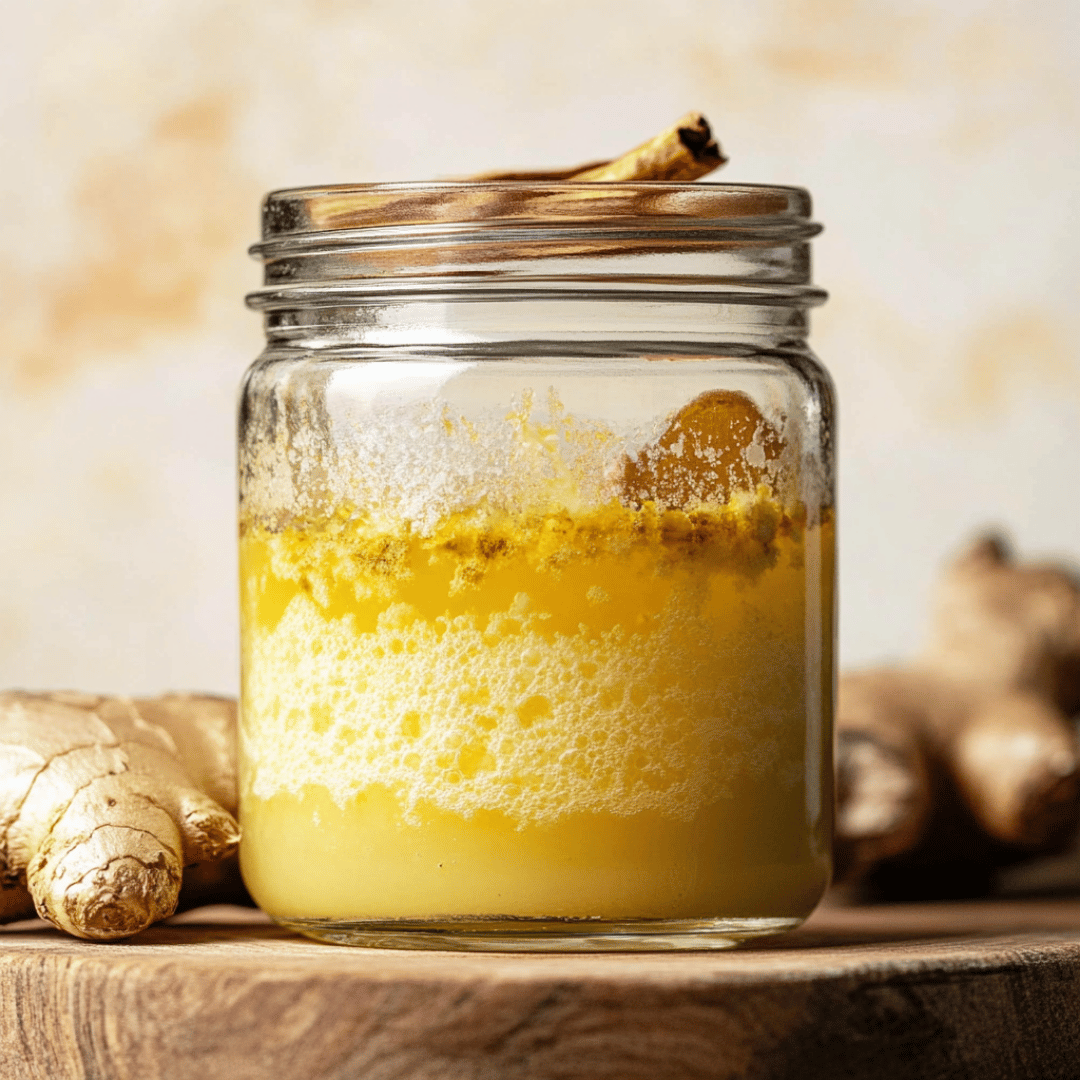
The Probiotic Power of Homemade Ferments
Not only is making your own ginger bug recipe deeply satisfying, but it also connects you to traditions passed down for generations. Each bubble tells a story of life, health, and transformation — the same magic that fascinated my Nonna so many years ago.
I encourage you to start your ginger bug today. You’ll never look at fizzy drinks the same way again!
A Deeper Look into Ginger Bug Fermentation
Fermentation is a natural process as ancient as civilization itself. Long before refrigeration, fermentation was the primary method of preserving food and drinks. Wild yeasts and beneficial bacteria — the heart of the ginger bug — not only keep your drinks fresh but enrich them with enzymes, probiotics, and vitamins.
How Fermentation Works in a Ginger Bug
In a ginger bug:
- Sugars feed wild yeasts.
- Yeasts produce carbon dioxide (bubbles) and ethanol (tiny traces).
- Beneficial lactic acid bacteria grow, lowering the pH and preserving the liquid.
This combination creates the perfect probiotic-rich environment that supports digestion, boosts immunity, and adds that satisfying fizz!
Nutritional Benefits of a Ginger Bug
- Probiotics: Balance gut flora, aiding digestion and immune function.
- Digestive Enzymes: Help break down food more efficiently.
- Antioxidants: From fresh ginger, reducing inflammation.
- Natural Energy: The gentle fermentation process preserves the energy-rich sugars while adding bioavailable nutrients.
History of Fermented Beverages: From Ancient to Modern
The idea behind a ginger bug isn’t new!
Let’s take a little culinary journey:
- Ancient China (3000 BC): Early records show fermented tea (kombucha) and rice wines.
- Ancient Egypt: Hieroglyphics depict beer brewing and spontaneous fermentations.
- Medieval Europe: “Small beers” — lightly fermented, low-alcohol brews — were made at home for safe hydration.
- Colonial America: Pioneers made “ginger beer plants,” a direct ancestor to the ginger bug!
Fun Fact:
The original ginger beer plant was a symbiotic culture of yeast and bacteria (SCOBY) used to make naturally carbonated, mildly alcoholic drinks.
Our modern ginger bug is simpler but still deeply traditional!
Building Your Fermentation Routine: Daily Ginger Bug Care
Consistency is key!
Just like a sourdough starter, a ginger bug thrives with daily attention.
Sample Daily Routine:
- Morning: Stir your ginger bug gently.
- Evening: Add your daily feeding of 1 tsp ginger + 1 tsp sugar.
- Quick Check: Look for bubbles, smell lightly, and check consistency.
Weekly Maintenance
- Remove a little liquid if the jar fills up.
- Stir any settled ginger bits to keep the culture oxygenated.
Advanced Ginger Bug Troubleshooting
Even seasoned fermenters run into a few challenges. Here’s a quick diagnosis chart:
| Problem | Cause | Solution |
|---|---|---|
| No bubbles after 5 days | Cold temperatures or chlorine | Move to warmer spot; ensure filtered water. |
| Mold growth (white fuzzy patches) | Contamination from utensils or poor air circulation | Discard and restart. Sterilize tools next time. |
| Strong rotten smell | Wrong bacteria present | Discard. Use fresher ginger next batch. |
| Paste-like thickening | Evaporation or too much sugar | Add 1–2 tsp filtered water, stir well. |
Expanding Your Skills: Secondary Fermentation
Once you master your starter, you can move to secondary fermentation for even more exciting drinks!
How to Start Secondary Fermentation:
- Mix your finished starter with sweetened herbal tea, fruit juice, or ginger tea.
- Bottle in swing-top bottles or mason jars with tight lids.
- Let ferment at room temperature for 12–48 hours.
- Chill and enjoy your homemade probiotic soda!
Flavor Ideas:
- Hibiscus & Lemon
- Strawberry & Mint
- Pineapple & Ginger
- Elderflower & Lime
Flavor Infusions: Taking Your Ginger Bug Drinks to the Next Level
Ginger’s spicy bite is lovely on its own — but why stop there?
Popular Infusion Ingredients:
- Fresh herbs (mint, basil, lavender)
- Citrus peels (lemon, lime, orange)
- Whole spices (cinnamon, cardamom, clove)
- Seasonal fruits (berries, mango, apple slices)
How to Infuse:
- During the secondary fermentation, add flavorings directly to your liquid.
- Strain before drinking for a clean, smooth sip.
Creative Tip:
Create themed batches!
Example: “Tropical Paradise” (ginger bug + pineapple + mint)
Ginger Bug vs. Kombucha SCOBY: What’s the Difference?
| Feature | Ginger Bug | Kombucha SCOBY |
|---|---|---|
| Starter Ingredients | Ginger + Sugar + Water | Sweetened tea + SCOBY (symbiotic culture) |
| Taste | Lightly spicy, sweet, gently tangy | Vinegary, strong, sharp |
| Carbonation | Natural, gentle fizz | Natural, can be intense if bottled tightly |
| Care Routine | Daily feeding if active; monthly if refrigerated | Brew cycles of 7–21 days |
| Flexibility | Easier to flavor, mix, and use | Requires specific tea-based feedings |
Conclusion:
If you love low-maintenance and quick results → start with a ginger bug!
How to Troubleshoot Over-Carbonation or Under-Carbonation
Fermented sodas should be lively but not volcanic!
Here’s how to manage the fizziness:
Too Fizzy (Over-carbonated):
- Shorten secondary fermentation to 8–12 hours.
- “Burp” your bottles (open briefly) once daily.
Not Fizzy Enough:
- Extend fermentation by 12–24 hours.
- Add a tiny pinch of sugar before bottling.
Creative Uses for Leftover Ginger Bug Liquid
If you end up with too much ginger bug liquid, don’t waste it! 🌟
Smart Ideas:
- Add to salad dressings for a probiotic boost.
- Splash into marinades for grilled chicken or tofu.
- Stir into oatmeal, yogurt, or overnight chia pudding.
- Freeze into probiotic ice cubes for cocktails or smoothies.
The Microbial Science Behind a Ginger Bug
Wild Yeasts
Yeasts are microscopic fungi that eat sugar and excrete carbon dioxide and alcohol.
Common strains in ginger bugs:
- Saccharomyces cerevisiae
- Brettanomyces
These same strains are found in beer, wine, and sourdough!
Beneficial Bacteria
Lactic acid bacteria thrive in the slightly acidic, sugar-rich environment. Key species include:
- Lactobacillus plantarum
- Lactobacillus brevis
They help preserve the bug, add a subtle tangy flavor, and contribute major gut health benefits.
Health Benefits Backed by Science
Several studies support the benefits of consuming naturally fermented foods like those made with ginger bug:
- Gut Health: Probiotics support the microbiome, which impacts digestion, immunity, and even mood!
- Anti-Inflammatory Effects: Ginger itself has documented anti-inflammatory and antioxidant properties.
- Blood Sugar Control: Some studies suggest fermented beverages help stabilize blood glucose levels.
- Enhanced Nutrient Absorption: Probiotics aid in breaking down food and improving nutrient uptake.
Scientific Source: NIH on Probiotics and Fermentation Benefits
Tips for Successful Fermentation Every Time
- Use organic, fresh ginger for maximum microbial action.
- Avoid using metal containers (can inhibit yeast).
- Filter your water to remove chlorine and fluoride.
- Be patient: temperature and environment affect speed!
- Trust your senses — sight, smell, and taste.
Reader Stories: Ginger Bug Success!
“After trying this method, my family now drinks homemade hibiscus soda daily. The ginger bug is like a little science project on our counter — fun and delicious!”
— Melissa T., Vermont 🌸
“My 5-year-old son calls it ‘bubble juice’! I add mint and berries, and he thinks it’s magic.”
— Carla D., Texas 🍓
One Last Thought: Ferment with Joy
When you nurture a ginger bug, you’re not just creating a starter — you’re participating in an ancient, joyful dance between nature and nourishment. Each bubble, each whisper of fizz, is a reminder that life is vibrant and resilient. Take a moment to celebrate the tiny victories: the first bubbles, the first sip of your homemade soda, the satisfaction of making something so alive with your own hands. Fermentation isn’t just science — it’s a slow, delicious art form that invites patience, wonder, and a little everyday magic into your kitchen. Happy brewing, and may your ginger bug bring sparkle to your home and your heart! 🌱✨
Conclusion: Your New Fermentation Journey Starts Now
With just ginger, sugar, and water, you can create living magic in a jar.
The ginger bug recipe isn’t just a method — it’s an invitation to reconnect with natural foods, empower your gut health, and rediscover flavors alive with energy.
Whether you’re brewing a tropical soda, blending probiotic smoothies, or just sipping a fizzy ginger drink at sunset, your homemade ginger bug will be there — quietly bubbling away, like a tiny kitchen companion.
Here’s to your fizzy adventures, friends! 🥂✨
Print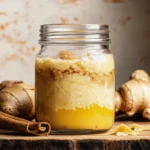
Easy Ginger Bug Recipe for Probiotic Drinks (Step-by-Step)
- Total Time: 4 days (approx)
- Yield: 1 jar (multiple drink batches) 1x
Description
Learn how to make an easy, natural ginger bug starter for probiotic sodas and homemade fermented drinks with this simple, step-by-step guide.
Ingredients
-
1 tsp granulated sugar or raw cane sugar
-
3 tsp filtered water (non-chlorinated)
1 tsp fresh organic ginger (unpeeled, finely grated)
Instructions
-
In a clean 16-oz glass jar, combine grated ginger, sugar, and filtered water.
-
Stir vigorously until the sugar dissolves.
-
Cover the jar with a breathable cloth and secure it with a rubber band.
-
Place in a warm, shaded spot (70–75°F / 21–24°C).
-
Every 24 hours for 3–4 days, feed the bug with 1 tsp grated ginger and 1 tsp sugar, stirring well.
-
By day 4, check for bubbles and a yeasty aroma.
-
If active, use the ginger bug to carbonate drinks. If not, continue daily feedings until active.
Notes
Always use organic ginger to avoid irradiated produce.
Ensure water is chlorine-free to encourage fermentation.
If mold appears, discard and restart.
Adjust water if the mixture becomes too thick.
- Prep Time: 10 minutes
- Category: Beverage
- Method: Fermentation
- Cuisine: American
Nutrition
- Serving Size: 1 tablespoon (starter liquid)
- Calories: 20 calories (per tablespoon)
- Sugar: 5g
- Sodium: 1mg
- Fat: 0g
- Carbohydrates: 5g
- Fiber: 0.1g
- Protein: 0g
- Cholesterol: 0mg
Keywords: ginger bug recipe, probiotic drink starter, homemade fermented soda, natural carbonation, ginger beer starter

